Can you picture a moment when you are trying to accelerate the motorbike but due to insufficient fuel it can not reach to its potential speed threshold?
Well, the power limit throttling on your CPU is a spitting image of this phenomenon. Can’t relate how?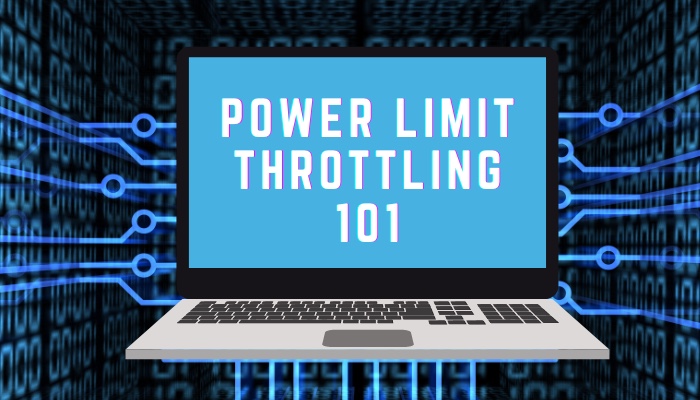
In this article, I’m going to explain everything you ever need to know and stop power limit throttling conclusively.
What is Power Limit Throttling?
To simply put, when your CPU can not hit its maximum performance potential as a consequence of inadequate power, it is defined as power limit throttling. As it turns out, the CPU or GPU can’t reach that upper limit due to insufficient power budget, although it has enough performance headroom.
It may sound a bit unclear at first, but let’s understand this with an analogy.
Imagine yourself as a marathon runner. You can go over 35 miles comfortably. But the track length is only 25 miles. When you finish the race, you still have enough energy left to run a bit further.
So what does that imply? The track length is limiting your running ability.
By the same token, compare the track length as the total power allocated to the CPU and your maximum running potential as the processing power of the CPU. As the processing potential is vastly bound to clock speed in most cases. Let’s narrate running ability as the frequency of the processor.
Now, pretend that the CPU can utilize 125W and boost up to 4.5Ghz. When you tank the power from the BIOS at 65W, the frequency can only climb up to 4.2GHz. As a result, your processor can’t provide its maximum performance output due to the limited power.
Pretty simple, right?
With that being said, there’s another inevitable factor— Heat.
When the processor boosts for a long-winded duration, it has to work more. So, there will be a greater degree of thermal output. It’s just basic physics. And if you don’t have enough cooling headroom, thermal throttling is apparent.
Is Power Limit Throttling Bad?
Power limit throttling is not bad at all, nor does it always a good thing! It’s more of a conservative yet smart feature to maximize the battery life of a laptop; also, ideal for systems with weak power supply units.
Depending on the circumstances, you might want to enforce or bypass power limit throttling.
You see, laptops are mostly designed with a compact form factor in mind. They typically have limited cooling potential and the temperature can spike up rapidly even with casual operations such as web browsing.
To make these devices last longer yet hold the overall performance in high esteem, manufacturers put a limit on the power, used by the processor. So that the users experience the best of both worlds— long battery life and smooth performance.
Say, your laptop has a 65Whr (Watt Hour) battery. If the CPU runs at 60W, you’ll get miserable backup out of your machine. And you’ll find power limit throttling useful in such instances.
At the same time, if the total power consumption of your system is 200W and the PSU barely or under-delivers that power, you’ll have an unstable computer. In the worst-case scenario, there might be component damage in order.
On the flip side, when you need maximum performance while engaging in heavy tasks such as video editing, 3D rendering, compression, etc. you’ll naturally want to extract the most out of your CPU.
You really don’t want to encounter power limit throttling in such an instance, do you?
What Causes Power Limit Throttling?
Power limit throttling emerges when the CPU power limit is set too low, such as PL1 or PL2, and CPU Core (Vcore) Voltage is lower than the optimal level. Besides, insufficient cooling headroom and power delivery can also trigger CPU throttling big time.
You know, on the Intel platform there are two main power stages: PL1 and PL2. The first one typically has a limit of 65W and the latter offers Unlimited power.
No, it’s not like Thanos’ thirst for infinite power! 
Unlimited refers to the maximum power utilization by the CPU. If it can pull 200W+ of power from the wall, PL2 allows that.
As things stand now, manufacturers restrict the CPU manually to maintain a lower power bracket in PL1, hence CPU throttling comes into existence.
Speaking of throttling, voltage allocation for the processor is directly associated with energy utilization. Lower voltage prevents the CPU from boosting to a higher frequency. As a result, you encounter low power uptake and throttling.
Apart from all the other factors, cooling potential and power delivery from the PSU are the two most common elephants in the room. Lackluster performance in these two areas can provoke power limit throttling too.
How to Fix CPU Power Limit Throttling
Resolving power limit throttling almost entirely involves lifting any power restriction from the BIOS or with the help of software programs like XTU, or AATU, improving the cooling capability of the system and allowing the maximum power budget to the processor.
Here are the methods that you can follow to fix power limit throttling:
1. Remove Power Limit
Before anything else, eliminating the power limit imposed by the manufacturer is the most effective method to fix the throttling. You can achieve this, from the BIOS or software solutions.
Following are the different approaches to withdrawing the power limit of a CPU:
Lift the Power Limit from the BIOS
Tweaking BIOS for removing the power limit applies to desktop processors, especially locked or non-K Intel CPUs. This approach allows you to take advantage of the last bit of performance your processor can deliver.
That being said, what about AMD CPUs? Well, they are, traditionally, not constrained by power, unlike Intel. Not to mention they are fully unlocked, and you can tweak everything such as core voltage, current, frequency, etc.
Here is how you can lift the power limit from the BIOS:
- Restart your PC and go to the BIOS. Keep pressing the BIOS key on your keyboard until you see the menu. Usually, F2, F10, F11, F12, or Del are the BIOS switch depending on the brands.
- Switch to Advanced Mode.
- Navigate to AI Tweaker (ASUS), OC Tweaker(AsRock), Tweaker(Gigabyte), OC(MSI).
- Search for Long Duration Power Limit, Long Duration Maintained, and Short Duration Power Limit.
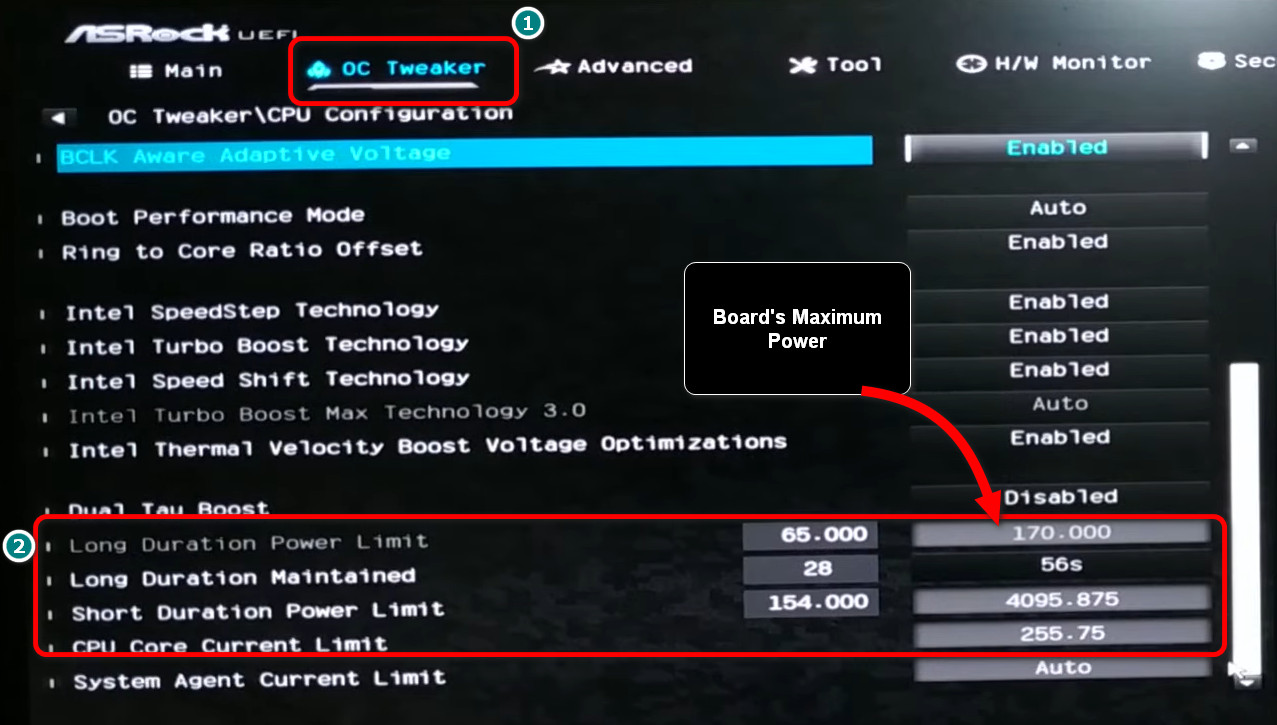
- Set the following values for these options:
| Settings Name | Value |
|---|---|
| Long Duration Power Limit | Maximum as your motherboard supports, e.g., 125, 140, or 170W. |
| Long Duration Maintained | Type Unlimited or set the maximum available value. |
| Short Duration Power Limit | 4095 |
- Save and exit the BIOS.
Your PC will restart loading the new power settings. Now, run some stress tests and monitor the CPU package power. It should utilize the maximum power and boost to higher clocks than the stock 65W limit. Also, you should expect a higher temperature.
Use Intel Extreme Tuning Utility (XTU)
If fiddling around with BIOS settings put menace to you, you can use Intel Extreme Tuning Utility. It makes the process so easy, like stealing candy from a baby!
Now, this tool is especially effective for laptops with limited BIOS options.
Here are the steps to disable the power limit with XTU:
- Download, install, and launch XTU.
- Download and install CPU-Z.
- Launch CPU-Z and note down the Max TDP of your processor.
- Switch to the Advance Tuning tab on XTU.
- Apply the Max TDP you wrote down just a moment ago in the Turbo Boost Power Max option.
- Set Turbo Boost Short Power Max to 1.5-2x more than the Max TDP. For example, if the max TDP is 65W, you can set any value between 100-125W.
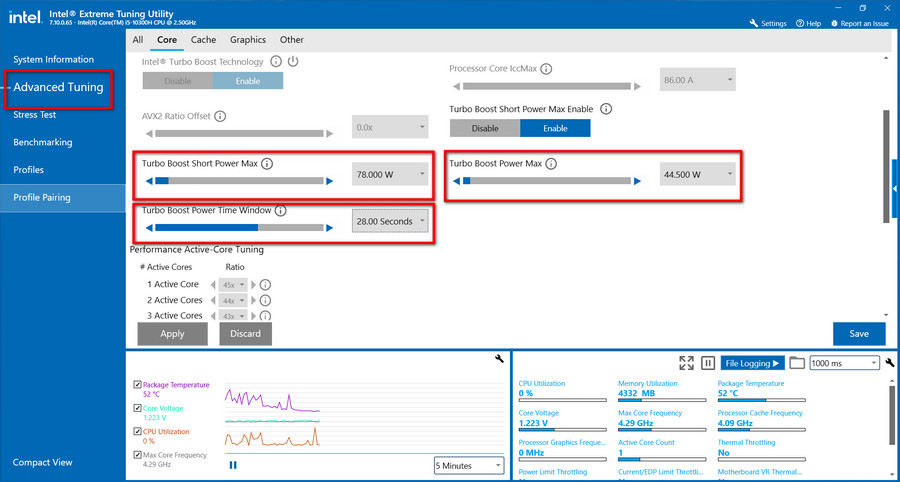
- Change to the Stress Test tab and run the test.
You should see the Power Limit Throttling at the bottom, saying No.
Nevertheless, when you experience high temp, dial down the Turbo Boost Short Power Max and check again.
Moral of the story — find the balance between Power and Temperature.
Note: You can jack up the Turbo Boost Power Max and Turbo Boost Short Power Max values in the app. It won’t break anything, rather will allow the CPU as much power it can use. For laptops, as the heat is a big concern, start off with a conservative power profile.
Stop Power Limit Throttling Using Throttlestop
Another brilliant software tool to fix power limit throttling is the Throttlestop application. It requires a separate article to run you through all the different options, but for our purpose, it’s totally unnecessary.
Here’s how to stop power limit throttling via Throttlestop:
- Download and open Throttlestop.
- Click on TPL from the menus at the bottom right.
- Uncheck Disable Controls.
- Run CPU-Z and jot down the Max TDP value.
- Set Long Power PL1 and Long Power PL2 according to your processor’s maximum TDP. You can, however, set higher values with no issues, except for higher temperature.
- Crank the Turbo Time Limit slider to the right.
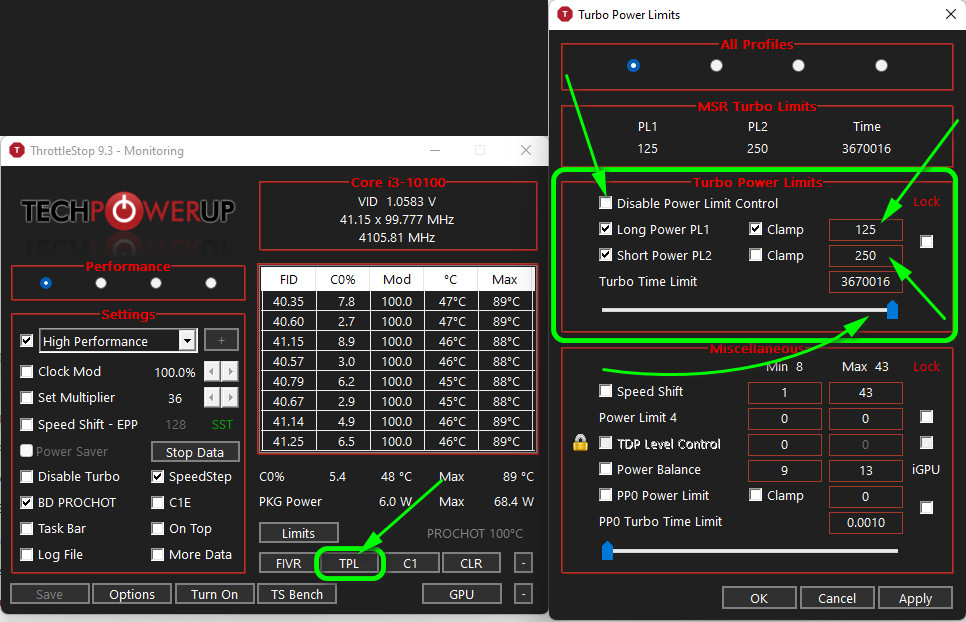
- Hit Apply and click Ok.
Now, run some stress tests such as Cinebench R23, and check the CPU package power. This time, the processor will consume power according to the new values and unleash maximum performance.
Congrats! There’s no more CPU throttling due to power restrictions.
Note: Throttlestop is currently compatible with Intel CPUs only.
Use AMD APU Tuning Utility (AATU)
Similar to XTU, AMD laptop processors which are also known as APU can be allowed to devour extra power to ensure peak performance. AMD APU Tuning Utility is brilliant on that account.
Here is the process to allow more power to AMD laptop CPU using AATU:
- Read and note down current maximum TDP running the Prime 95 Small FFT test.
- Install and launch AATU.
- Switch to Pre-made Preset tab.
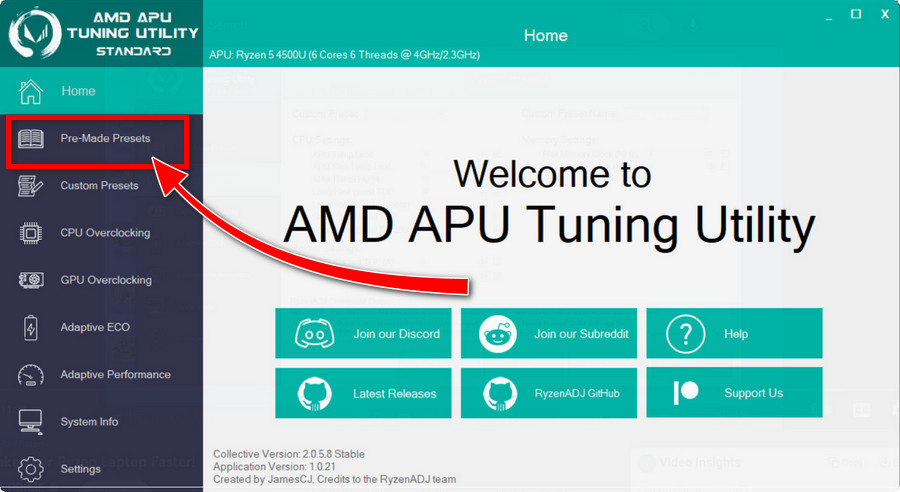
- Select the appropriate APU Series/Device and APU Device Preset as per your computer’s hardware.
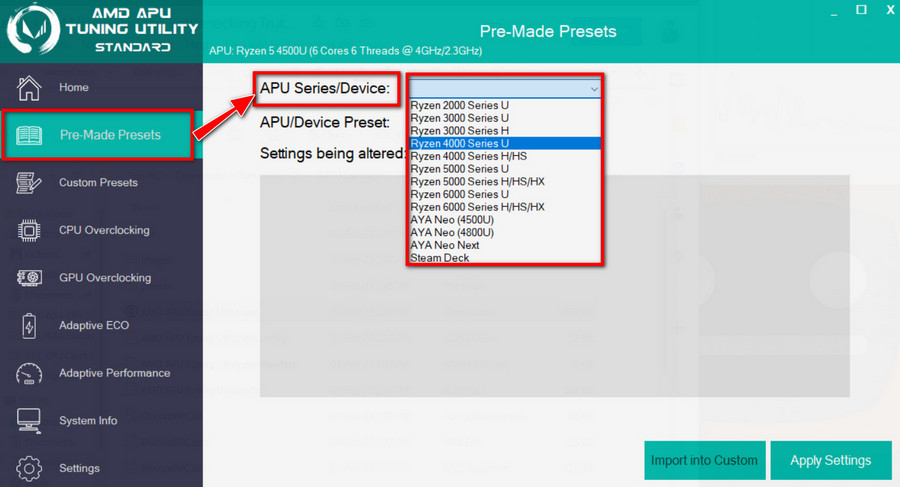
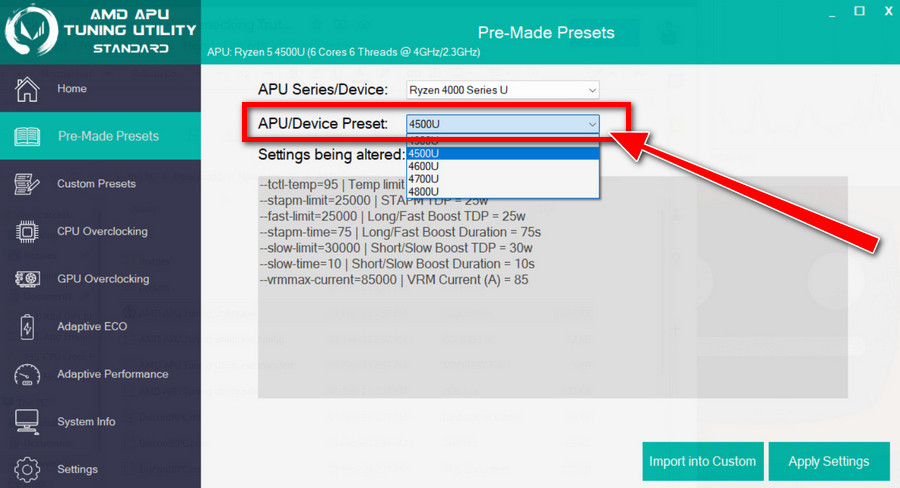
- Change to Custom Preset tab.
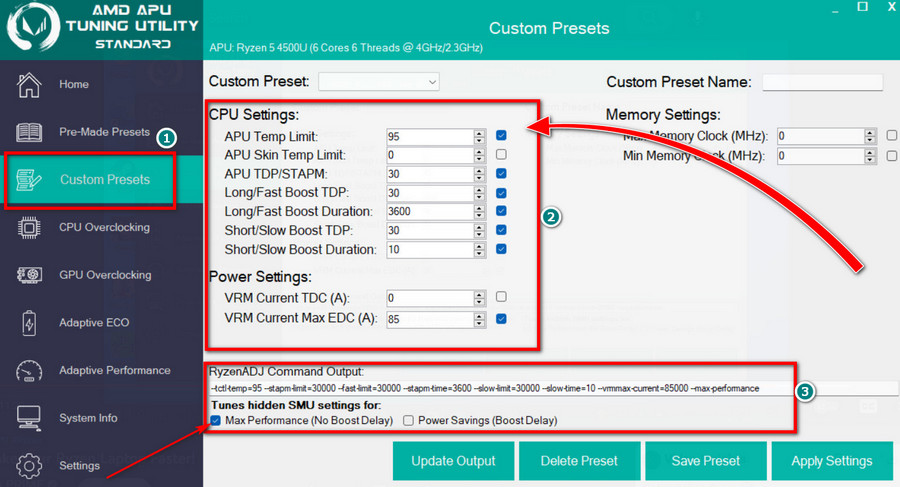
- Make changes to the following options:
| Option Name | Value |
|---|---|
| APU TDP/STAMP, Long/Fast Boost TDP and Short/Slow Boost TDP | Target power budget e.g 30W, 45W etc. |
| Long/Fast Boost Duration | 3600 or as high as the app allows to input |
| Short/Slow Boost Duration | 10 |
- Apply and save the preset.
Play around with different applications such as games and testing programs to check whether new power allocation works or not.
2. Ensure Maximum Cooling of Your Computer
Thermal output is the direct outcome of the high power usage of a CPU. Increased temperature will eventually force your processor to not go over a certain level of power. As a result, it will encounter power and thermal throttling at the same time.
For example, my 11500 runs on 65W TDP at stock power settings, and the highest temperature it hits on all core load is 81°C. At 125W power profile, however, you can cook your breakfast!
Yes, as expected, the temp hovers around 92 degrees. And that’s because of the lousy stock cooler. Not to mention the dip in clock speed.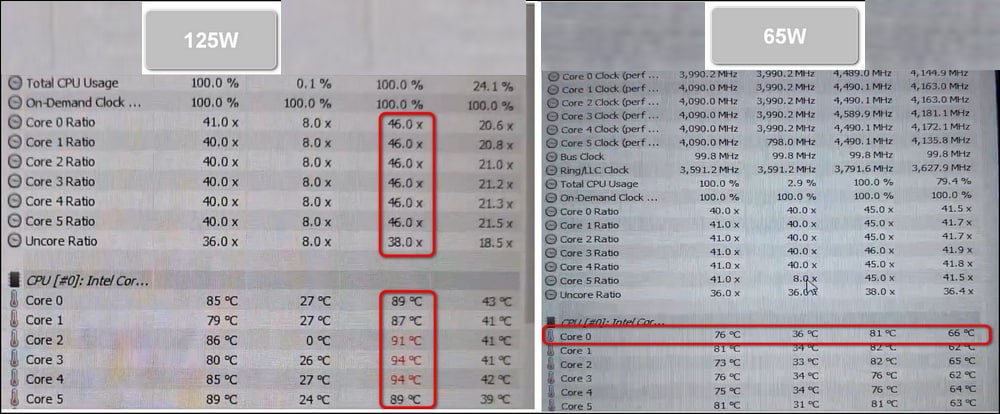
So, it’s a matter of the utmost importance that your computer has a great cooling solution.
Here’s what you can do to provide the necessary cooling capability to your system:
- Get a better cooler that has a TDP rating higher or equal to your CPUs maximum TDP value.
- Shift the internal components to a well-ventilated case. So that the heat can dissipate quickly.
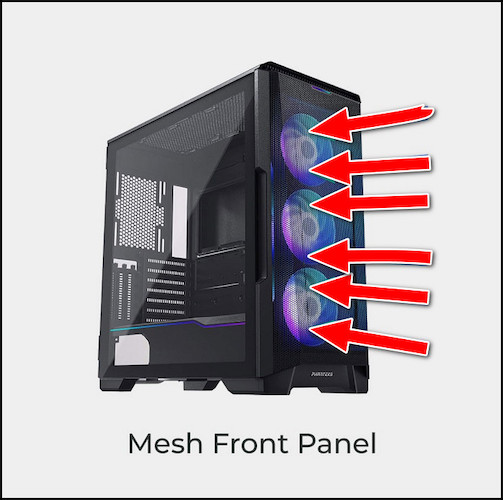
- Add quality fans to the chassis. Pick fans with better CFM and RPM ratings. Install them properly to achieve neutral air pressure inside the chassis.
3. Set Power Settings for Maximum Performance
By default, laptops run on balance power mode to conserve battery life and keep the temperature within safe limits. Applying the maximum performance profile helps the system run at a considerably higher power state.
Here are the steps to set maximum performance in power settings:
- Press Windows + S together to open the Windows Search bar.
- Type edit power plan and click on the first result.
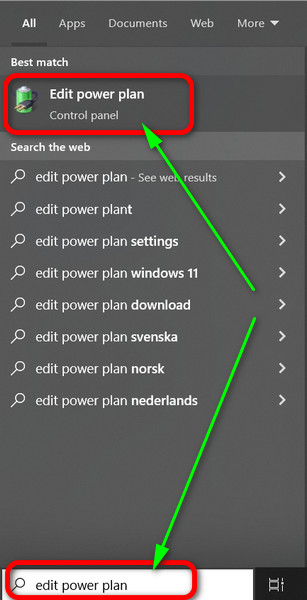
- Click on Change advance power settings.
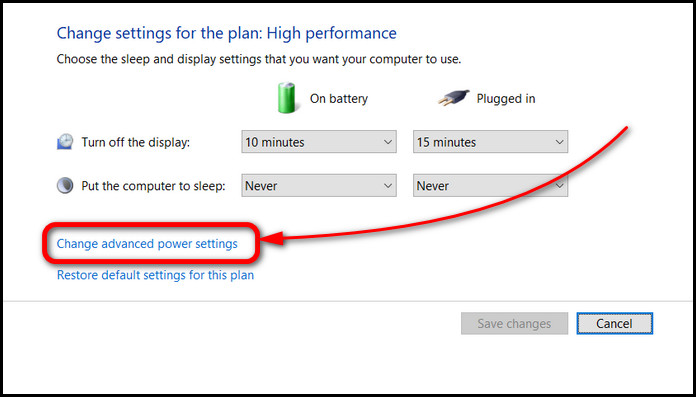
- Choose High Performace or Maximum Performance from the drop-down.
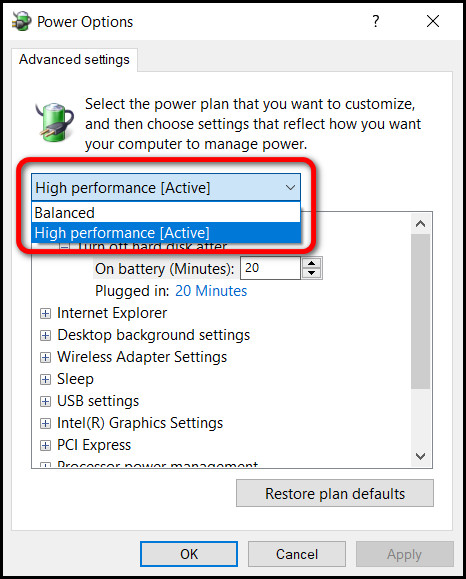
- Hit Apply.
Now, your processor should boost to a higher clock speed and produce increased overall performance.
4. Feed Necessary Voltage to the CPU
You know, when the CPU suffers from low voltage, power utilization drops significantly. This mostly occurs if you apply an aggressive undervolting profile.
So, what is the right measure? Well, you need to allocate the right amount of core voltage (Vcore) your cpu can take so that the power limit throttling does not spring up.
Though the good news is, you don’t have to worry about any voltage adjustment with locked CPUs.
5. Upgrade to a Rated PSU
As you are already aware, African people, especially kids, are malnourished as a result of insufficient food and water. Consequently, their physical growth is handicapped and can not meet the formidable potential.
But what does it have to do with power limit throttling?
Well, when the CPU doesn’t receive enough power due to the limitation of the power supply unit, optimal performance is hindered big time. Eventually, a throttling is in order.
Can you tell, where I’m going with this?
Right, the PSU is the one to provide the CPU with essential power when requires. Just like a person needs food.
For this reason, I recommend you buy a PSU higher than the total consumption by your computer. In that case, measuring how many watts your computer is currently using might be useful.
But don’t cheap out on this component. At least get an 80+Bronze rated PSU. PSU tier list will help you decide in such instance by the way. 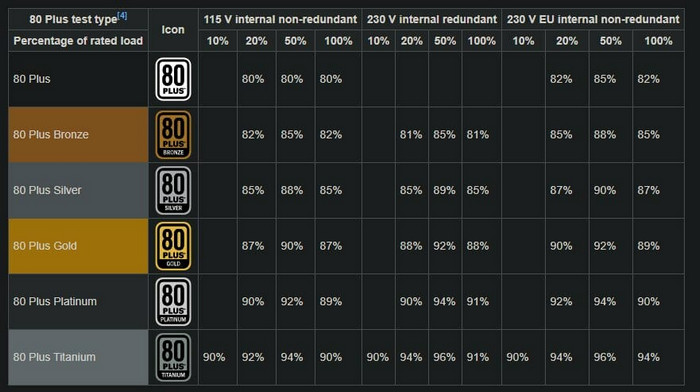
6. Stop Power Throttling Using Group Policy
As a method to quickly fix the CPU throttling, group policy manipulation works exceptionally well.
Here are the steps to disable power throttling using group policy:
- Open Windows Run by pressing Win + R together.
- Type gpedit.msc and hit Enter.
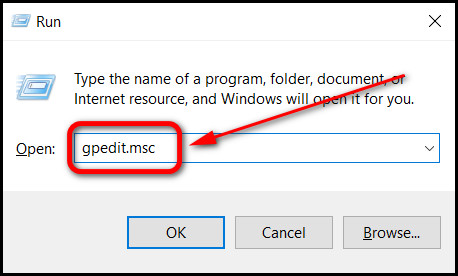
- Navigate to Local Computer Policy > Computer Configuration > Administrative Templates > System > Power Management > Power Throttling Settings.
- Double-click on Turn off Power Throttling and choose Enabled.

- Hit the Apply button.
Restart your computer. On the next boot, power limit throttling should be removed from the OS level.
Note: Follow the same process backward by selecting Disabled in Turn off Power Throttling option to restore the settings.
7. Disable Power Throttling from the Registry
Windows registry is also a getaway to get rid of the Power limit throttling. But this is a bit of a risky method, as if you mess up any settings, your OS might brick. So, before moving on, back up your system.
Here is the procedure to disable power throttling from the registry:
- Launch Run by pressing Windows+R button.
- Write regedit and access it by pressing the Enter key.
- Copy and paste Computer\HKEY_LOCAL_MACHINE\SYSTEM\CurrentControlSet\Control\Power path in the address bar.
- Right-click on the Power folder and choose New > Key.
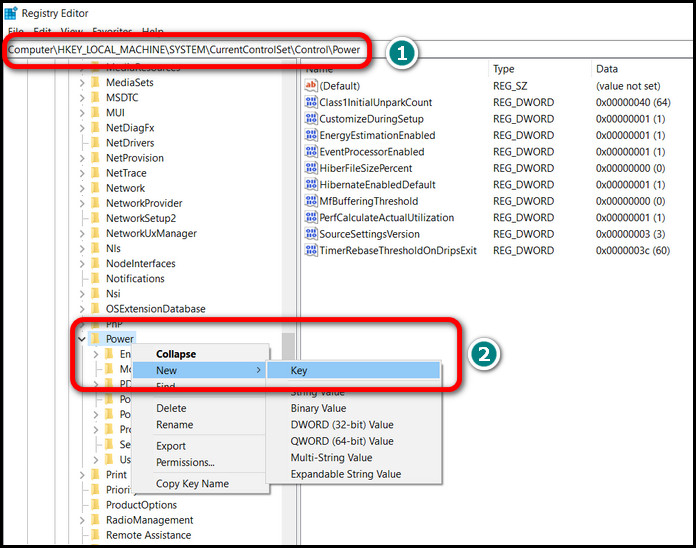
- Name the new key as Power Throttling.
- Right-click on the new key and create a new DWORD (32-bit) Value.
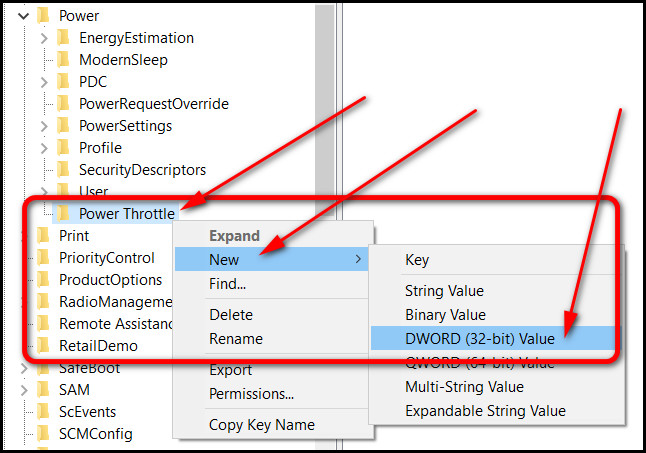
- Choose the Name PowerThrottlingOff for it.
- Set Value data : 1 for Hexadecimal base.
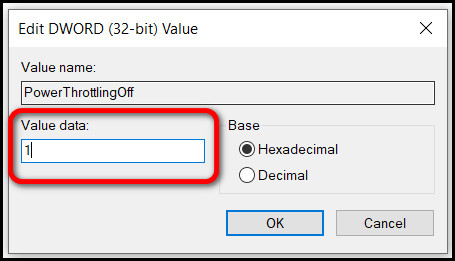
- Select OK.
Once you are done with the process, restart your computer. From now on, Windows will not try to conserve battery with limited power usage.
FAQs
Is Power Limit Throttling Good?
Yes, power limit throttling is good to a certain extent as long as your computer has a poor cooling solution. It’s especially effective on thin and light laptops.
Does Power Throttling Reduce FPS?
Yes, power throttling reduces FPS. As the CPU can’t take advantage of the full potential of its power usage, it can not boost to a higher frequency. As a result, frames per second in games are lower than expected.
How Do I Know If My PC Is Throttling?
To confirm whether your PC is throttling, open the Task Manager by pressing Ctrl+Shift+Esc and check the clock speed of the CPU. If it doesn’t seem to boost properly and deliver a sluggish performance across the board, your system is throttling.
Ending Remarks
So that’s everything you need to know about CPU power throttling. Hope you enjoyed all the nitty gritty. If you have more questions and inquiries, leave a comment down below.
Have a nice day!




